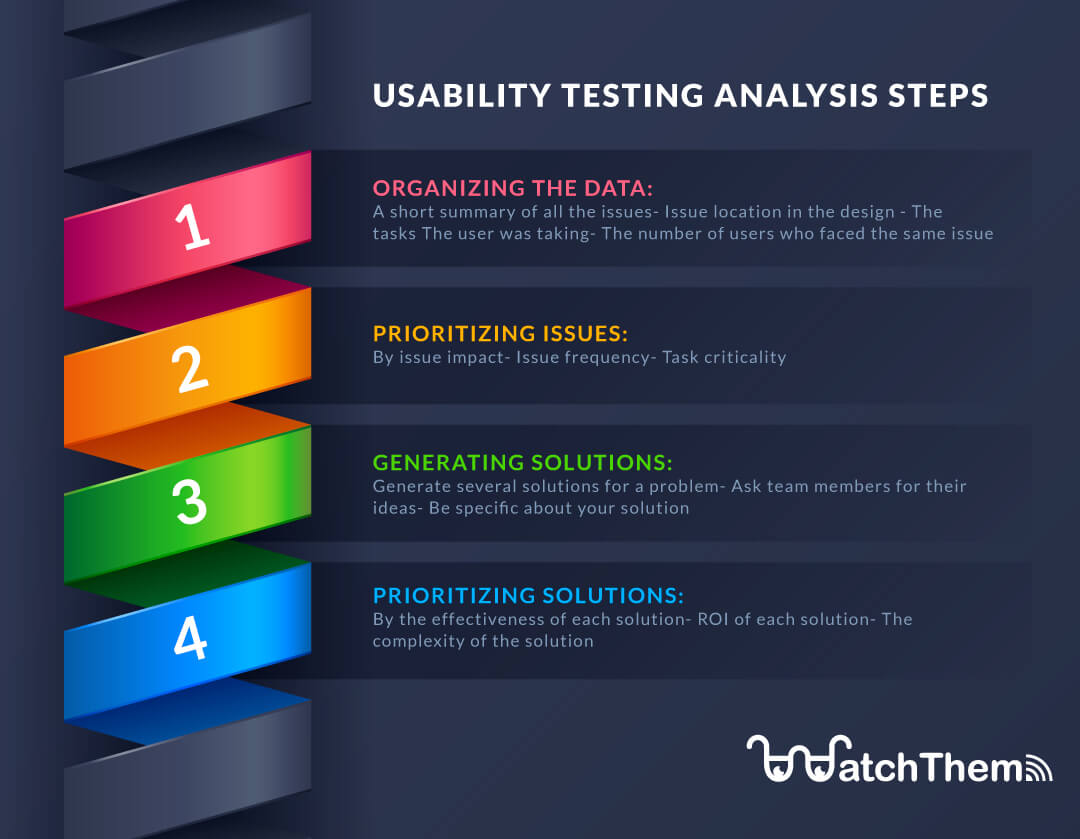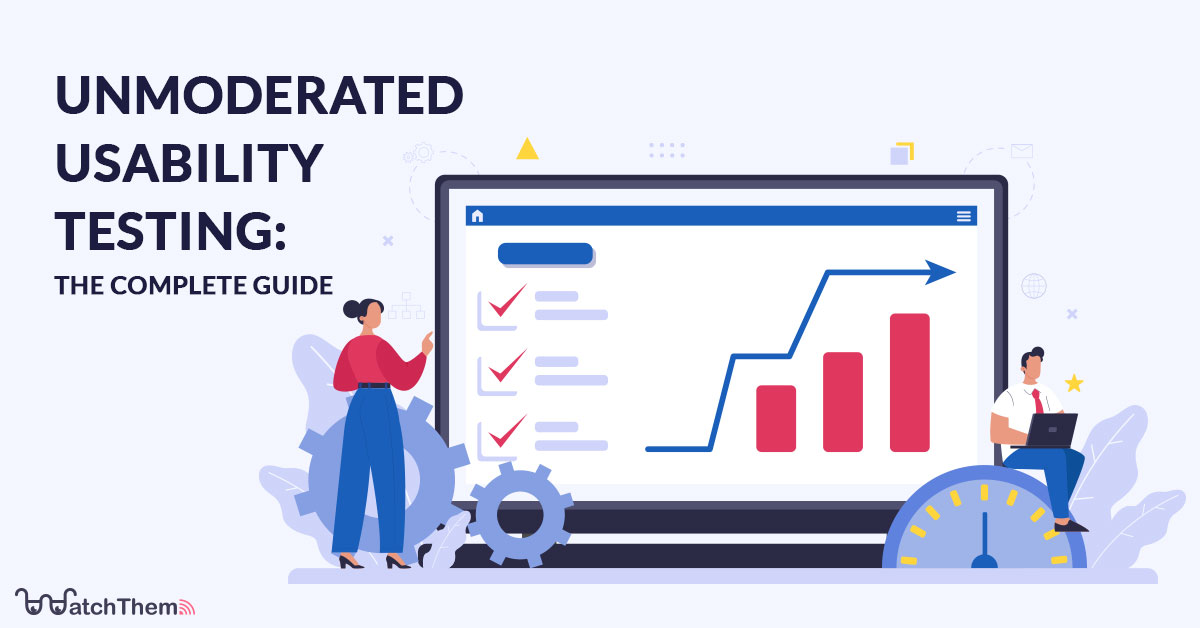Page Contents
As one of the best ways of exploring customers’ wants and needs, UX researchers need to learn everything about usability testing. Unmoderated usability testing is a cost-effective method that will help you get the answers you’re looking for.
Marcus Osterberg from Web Strategy for Everyone said: “Usability is not only about ease of use but also about bringing something meaningful, having an objective in common with the user.”
This quote shows the importance of usability testing and understanding your customers.
In this article, we’re going to learn everything about unmoderated usability testing so you can conduct a fruitful test.
Note: A great way to conduct unmoderated usability testing is using WatchThemLive’s session replay software. Keep reading to find out more.
What Is Unmoderated Usability Testing?
Unmoderated usability testing is a way of conducting usability test without the presence of a moderator and direct supervision. This test can be conducted in any kind of location via remote usability testing tools. In this method, participants are on their own, and there’s no one to answer their questions or guide them. During remote unmoderated usability testing, you can collect quantitative and qualitative data and behavioral feedback.
What Is the Difference Between Moderated and Unmoderated Usability Testing?
Unlike unmoderated ones, remote moderated usability tests are conducted under the observation of a moderator. In this kind of usability test, the moderator answers participants’ questions and leads them through the test. This method is expensive, time-consuming, and needs resources; however, you will gain more in-depth data compared to unmoderated usability tests.
When Should You Use Unmoderated Usability Testing?
Unmoderated usability testing is great when you need quick feedback or want to observe participants using your products in their natural environment. You can also use it when you are testing large sample groups, and you need answers to some specific questions. It is also good for testing your hypothesis.
How Do You Conduct an Unmoderated Usability Test?
There are several steps in conducting unmoderated usability tests. Make sure to document everything for an organized test to have everything you need in one single place.
1. Define the Goal of the Test
The first step in unmoderated usability testing is defining the test’s goal. This will help you form tasks and questions based on what you expect to gain from the test. Here are some usability testing goals:
- Understanding if the check-out process is simple
- Identifying usability issues
- Understanding if your website is mobile-friendly
Your goals should be in line with your questions and answer the questions you have.
2. Choose Your Testing Software
For conducting unmoderated usability testing, you will need software. This software should be able to record participants’ interactions with your website.
For this purpose, You can use session replay software. WatchThemLive provides session replay software that records participants’ actions as they complete the given tasks. This software also gives you quantitative data such as their screen resolutions, device types, browsers, and operating systems which are absolutely necessary for running a usability test. Watch this video to learn how it works:
Sign up now and get started with session replays.
3. Recruit Participants
Your participants probably play the most important role in running unmoderated usability testing. They should reflect your target audience and personas. You can recruit usability testing participants through several ways, such as your email marketing list, social media platforms, and pop-ups. You can also recruit participants using third-party platforms. If you’re going to recruit them from your own database, you have to offer them incentives to motivate them to take part in your test.
4. Create Tasks and Questions
You might come across usability testing templates and want to use those questions. Stop right there! These templates are general and not specific to your situation. You should develop your own questions that align with your test goals. There are three types of questions you can ask participants: screening or pre-testing questions, in-testing questions, and post-testing questions. Read this article about usability testing questions to get a complete understanding of what you have to ask them.
Then it’s time to create tasks and scenarios so participants can imagine themselves in an actual situation. Here’s an example:
Scenario: You own a kitten named Loe, and you’ve run out of cat litter. You have to get some as soon as possible.
Task: Download our app, add “Fresh Steps” litter to your shopping cart, then order it.
5. Conduct a Pilot Test
You should run a test study before your actual test. This helps you find any friction points or problems with your test design or unforeseen events. Also, you can understand how long it takes to complete the test and if your script and questions are viable.
6. Analyze the Results
Your job is not done after completing your unmoderated usability testing. There is lots of data gathered, and you need to analyze the usability test results before implementing any changes. Take a look at this infographic for quick information:


Unmoderated Usability Testing Pros and Cons
Before deciding to run unmoderated usability testing, you should be aware of its benefits and drawbacks to choose wisely.
Pros
- Testing as many participants as you want in their natural habitat.
- Very cost-effective compared to moderated usability testing.
- Testing several websites at the same time, such as your own website or competitors’ websites.
Cons
- You can’t see customers’ body language.
- Since there is no moderator, participants can’t ask questions.
- Some people only participate in your test because of your incentive, so you can’t get useful feedback out of them; however, you can identify them by their time on task.
- Qualitative research questions should always be included in your test since unmoderated usability testing mostly collects quantitative data and that’s not enough.
Conclusion
First, understand if you actually need to conduct usability testing. Then decide if you need a moderated or unmoderated test. Unmoderated usability testing is very easy to operate, but be careful when writing tasks and scenarios to get the result you’re actually looking for. Remember to plan everything ahead so the process won’t be stopped anywhere and analyze the results at the end.
In this article, we explained unmoderated usability testing with a step-by-step guide to help you successfully conduct one.
UX researchers use session replay software to conduct unmoderated usability testing. This software allows you to record participants’ screens as they complete their tasks or interact with your website. This is a very cost-effective method that every company can use.
Sign up to WatchThemLive and start your test now!


